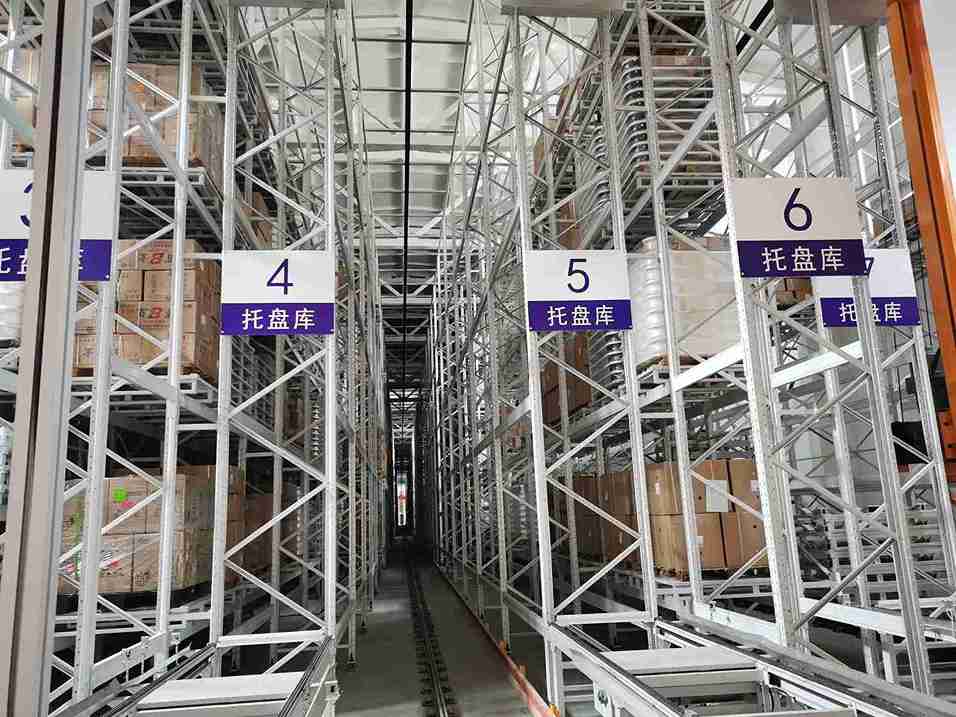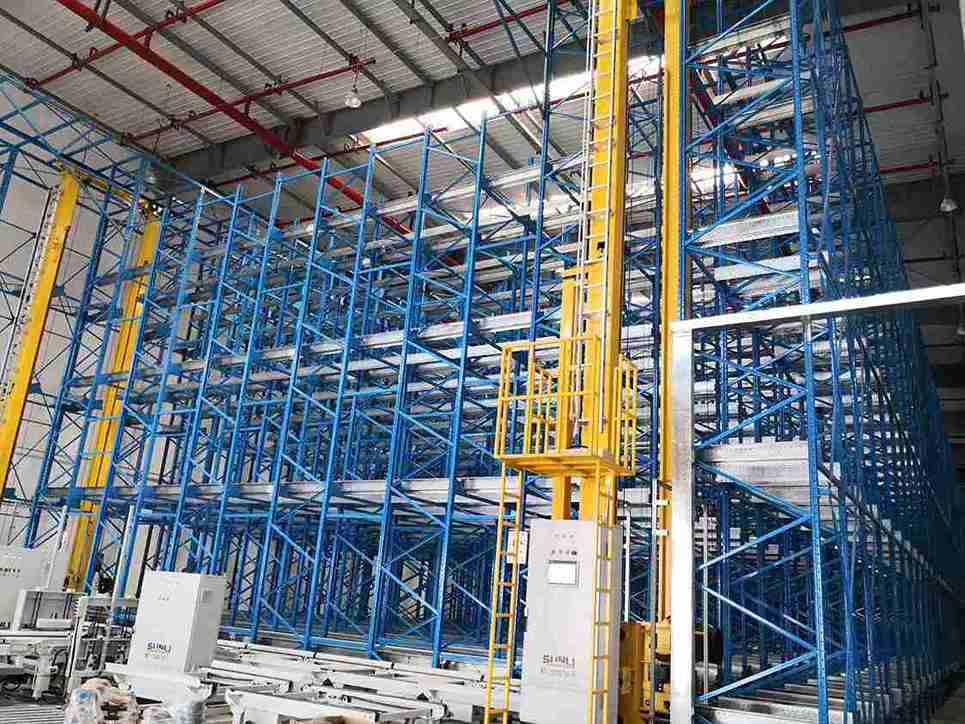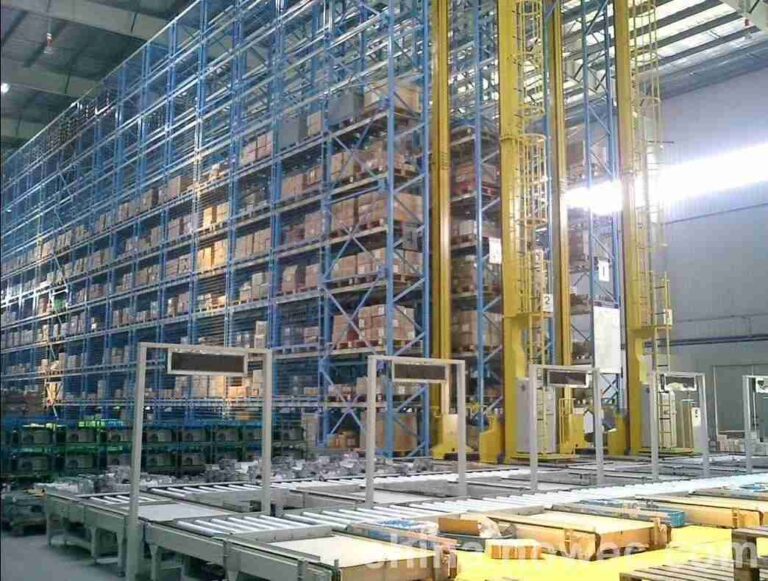📐 "First 50 Enterprise Queries Get Custom 3D Warehouse Design" Plan

The logistics and warehousing industry is undergoing a massive transformation, driven by the urgent need for efficiency, cost reduction, and scalability. At the heart of this revolution lies the automated storage system—a game-changing technology that is redefining how businesses manage inventory, fulfill orders, and optimize labor.
In this comprehensive case study, we analyze how a leading industrial manufacturer implemented an automated storage system and achieved a 40% reduction in labor costs within one year. Beyond just cost savings, the company also saw higher throughput, fewer errors, and better space utilization—proving that automation isn’t just an option; it’s a competitive necessity.
This guide will cover:
The critical challenges driving demand for automated storage systems
A real-world case study with quantifiable results
The key components of a high-performance automated storage system
How to calculate ROI before investing in automation
Future trends shaping the next generation of automated warehousing
Whether you’re a warehouse manager, logistics director, or business owner, this deep dive will help you make informed decisions about implementing an automated storage system in your operations.

1. The Rising Demand for Automated Storage Systems
1.1 Why Companies Are Rapidly Adopting Automation
The shift toward automated storage systems is accelerating, and for good reason. Warehouses today face:
Skyrocketing labor costs (wage inflation, training expenses, high turnover)
Pressure for faster order fulfillment (e-commerce demands same-day shipping)
Limited physical space (urban warehouses can’t easily expand)
Human error in order picking (costly mistakes lead to returns and customer dissatisfaction)
An automated storage system directly addresses these pain points by:
✔ Reducing dependency on manual labor (AGVs replace forklifts, AS/RS eliminates pickers)
✔ Increasing storage density (vertical systems utilize unused ceiling height)
✔ Boosting accuracy (barcode scanners and AI-driven sorting minimize errors)
1.2 The True Cost of Manual Labor vs. Automation
A typical warehouse allocates 60-70% of its budget to labor. With rising wages and labor shortages, these costs are unsustainable.
Automated storage systems provide a long-term solution:
AGVs (Automated Guided Vehicles) operate 24/7 without breaks
AS/RS (Automated Storage & Retrieval Systems) retrieve items 3x faster than humans
Automated conveyor belts reduce manual handling, lowering injury risks
In our featured case study, the company cut labor costs by 40% while increasing order accuracy to 99.2%.
2. Case Study: How a Manufacturer Slashed Labor Costs by 40%
2.1 The Problem: Inefficiency & Rising Labor Expenses
Our client, a mid-sized automotive parts distributor, struggled with:
$1.5M/year in labor costs (forklift drivers, order pickers, packers)
Slow order processing (10+ hours for outbound shipments)
High error rates (5% of orders had mistakes, leading to returns)
2.2 The Solution: A Fully Automated Storage System
After a detailed feasibility study, the company implemented:
✅ High-Density AS/RS Pallet Racking – Increased storage capacity by 35% in the same footprint
✅ Forklift AGVs – Replaced 8 manual forklifts, reducing labor needs
✅ Automated Sortation Conveyors – Cut order processing time by 60%
2.3 The Results: Dramatic Cost Savings & Efficiency Gains
| Metric | Before Automation | After Automation | Improvement |
|---|---|---|---|
| Annual Labor Costs | $1.5M | $900K | 40% reduction |
| Order Processing Time | 10 hours | 4 hours | 60% faster |
| Picking Accuracy | 95% | 99.2% | 84% fewer errors |
The automated storage system paid for itself in under 3 years—a remarkable ROI.
3. Key Components of an Automated Storage System
3.1 Automated Storage & Retrieval Systems (AS/RS)
AS/RS technology is the backbone of modern automated storage systems, offering:
Pallet AS/RS – Ideal for heavy loads (e.g., automotive, food & beverage)
Mini-Load AS/RS – Perfect for small parts (e.g., pharmaceuticals, electronics)
Vertical Lift Modules (VLMs) – Maximize vertical space in tight warehouses
3.2 AGVs & Autonomous Mobile Robots (AMRs)
Forklift AGVs – Automate pallet movement without human intervention
Cart-Based AMRs – Flexible, scalable solutions for dynamic warehouses
3.3 Conveyor & Sortation Systems
Belt Conveyors – Handle heavy cartons and pallets
Cross-Belt Sorters – High-speed sorting for e-commerce fulfillment
4. Calculating ROI: Is an Automated Storage System Worth It?
4.1 Upfront Costs vs. Long-Term Savings
AS/RS Installation: $500K–$3M (depending on size)
AGV Fleet: $50K–$300K per robot
Expected Payback Period: 2-4 years (based on labor savings)
4.2 Labor Cost Reduction: A Real-World Example
If a warehouse employs 25 workers at $50K/year, automation can replace 10-15 positions, saving $500K–$750K annually.
5. How to Choose the Right Automated Storage System
5.1 Critical Factors to Consider
Warehouse Layout (ceiling height, floor space, column spacing)
Inventory Profile (small items vs. palletized goods)
Future Growth Plans (modular systems allow scalability)
5.2 Common Pitfalls to Avoid
Underestimating software integration costs
Choosing an overly complex system
Neglecting maintenance requirements
6. The Future of Automated Storage Systems
AI & Machine Learning – Predictive analytics for smarter inventory management
Dark Warehouses – Fully automated facilities with zero human workers
Modular Robotics – Scalable automation for growing businesses
Conclusion
The evidence is clear: automated storage systems are no longer a luxury—they’re a strategic imperative for any warehouse looking to cut costs, boost efficiency, and stay competitive.
If you’re considering automation, the first step is a feasibility assessment to determine the best automated storage system for your needs.
FAQs
1. How long does it take to install an AS/RS?
Most automated storage systems take 3-9 months from planning to full deployment.
2. Can automation work in cold storage environments?
Yes! Cold-chain automated storage systems are designed for freezer warehouses.
3. What’s the lifespan of an automated storage system?
With proper maintenance, 15-25 years—far longer than manual alternatives.
4. Do I need to retrain my workforce?
Yes, but training shifts to system supervision rather than manual labor.
5. Are automated systems flexible for future expansion?
Modern automated storage systems are modular, allowing seamless scalability.
Welcome to contact us, if you need warehouse rack CAD drawings. We can provide you with warehouse rack planning and design for free. Our email address is: jili@geelyracks.com




